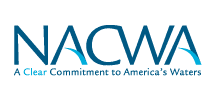Clean Water Advocacy - Newsroom - AMSA in the News
GR Sewer Cost Overflow?
Monday, November 22, 2004
By Jim Harger and Sarah Kellogg
The Grand Rapids Press
GRAND RAPIDS -- The job was just beginning in the 1990s, when Grand Rapids
spent $160 million to eliminate 96 percent of its combined sewage overflows into
the Grand River.
The city is spending about $53 million to eliminate another 3 percent of the
spills by 2006 and will spend another $100 million by 2020 to end them
completely, said Deputy City Manager Eric DeLong.
"The law of diminishing returns is working with full force here," DeLong said.
"That last little bit is going to be pretty expensive."
Besides that, the city and its suburban partners should spend another $126
million to bring the city's Waste Water Treatment Plant at 1300 Market Ave. SW
up to state and federal standards by 2020, according to a proposed 15-year
master plan unveiled to the system's governing board last week.
Those repairs and upgrades include new systems to improve secondary treatment,
manage increased peak flows and process the plant's sludge, said Robert Harbron,
a consultant who prepared the master plan.
Despite the big expenses ahead, Grand Rapids officials say they are ahead of the
game. Although theirs is the second-largest system in Michigan, it contributed
less than 3 percent of the sewage overflows into the Grand River last year and
less than 1 percent statewide.
Although state and local agencies have spent billions of dollars to repair and
upgrade Michigan sewer systems over the past 15 years, millions of gallons of
raw sewage continue to flow into lakes and streams after heavy rainstorms and
snow melts.
Local officials say they're working to rehabilitate sewage systems crumbling
because of age and overuse, but they concede they are not able to complete the
work because they don't have the money.
"There are just so many operational and financial challenges that the cities in
this state are facing right now," said Don Stypula, executive director of the
Grand Valley Metropolitan Council. "Sewer repairs are one of those things that
rarely pop up on the radar screens of citizens in general, so sometimes they're
hard to fund."
Environmentalists say the challenges cities face will get worse in 2005 with the
Bush administration trimming $500 million from a loan fund that helps finance
sewage-system repairs and construction.
Moreover, they fear that without the federal government putting sewer system
repairs at the top of the agenda, water pollution from sewage overflows will
continue unabated.
"We did a report in 2001 that found that billions of gallons of raw and
partially treated sewage was entering Michigan's waterways every year," said
Cyndi Roper, executive director of the Michigan chapter of Clean Water Action, a
national environmental group.
"We don't think that number has changed much in three years. We have allowed our
sewer systems to decay so incredibly that we're threatening our water quality."
Many cities have a long way to go despite having spent $47 billion nationally
and more than $2 billion in Michigan to repair and rework their combined and
sanitary sewer systems since 1989.
Raw sewage in local rivers or lakes poses a serious health threat,
environmentalists say.
In the early 1990s, the state and cities made combined sewer systems the
priority, splitting wastewater into separate pipes for sewage and storm water,
or creating holding basins to accommodate extra flow. In the past 15 years, the
number of combined sewer systems in Michigan has shrunk from more than 90 to
about 40.
And more repairs are in the pipeline. The Michigan Department of Environmental
Quality has 40 projects approved, at a cost of about $1.5 billion. The largest
is in Detroit, for about $802 million.
Michigan is luckier than most states because it has a pot of extra cash. In
2002, voters approved a ballot measure establishing a $1 billion bond fund for
clean water projects.
Until now, the state hasn't issued bonds to finance loans from its State
Revolving Fund. The combination of annual federal contributions, state dollars
and loan dollars paid back by cities that borrowed from the fund have kept it
afloat.
In 2005, there will be more than $200 million in loan money available and $180
million in projects slated for funding.



